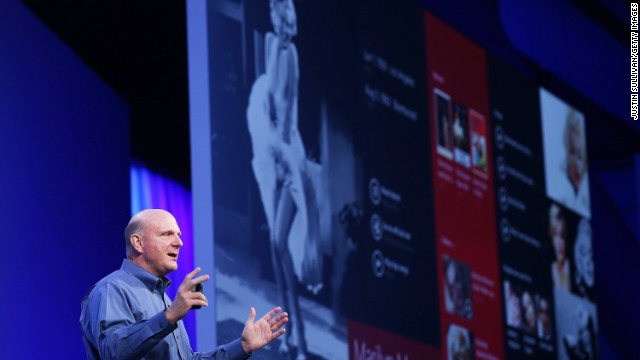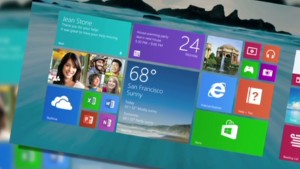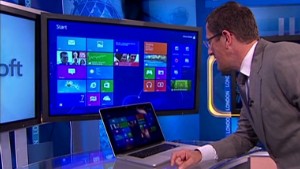It's 'Minority Report' meets Microsoft Kinetic as virtual interactivity comes to the PC. Cool, yes, but does it have any practical value?
Computerworld - Anyone who's ever stood in front of a Kinetic-equipped Xbox knows the fun of virtual control, of using your hands to manipulate what you see on the screen without touching anything but air.
The Leap Motion Controller endows your PC with that same air-powered interactivity, allowing you to bypass mouse and keyboard in favor of hand-waving control of apps, games and even various PC operations.
It's a cool concept, and Leap Motion pulls off the execution reasonably well -- for the surprisingly low price of $80. But it definitely raises a few questions, starting with: What would you actually use this thing for? And does it have any practical business value?
Plug and playtime
Not much larger than an average flash drive, the Leap Motion Controller has a glossy black top with a silver band wrapped around the sides. It's attractive and surprisingly compact, which is good considering it's designed to sit below your monitor (or, if you're using a laptop, in front of the keyboard). A USB 2.0 cable provides both power and connectivity. Leap Motion supplies both short (two feet) and long (five feet) cables to accommodate various computing configurations.
I tested the Leap Motion Controller with a Lenovo IdeaPad U310 Touch laptop and Samsung Series 9 ultrabook. Although the controller itself didn't get in the way, I disliked the look of the USB cable snaking around the side. This thing really begs for a rechargeable battery and wireless connection, which would emulate the somewhat disingenuous promo video where you see only the sensor, not the cable.
But installation couldn't have been much simpler. After loading the Windows client (it's also available for OS X) and plugging in the controller, I raised my hands and instantly saw their movement reflected in the introductory visualizer app. As a regular Kinect user, however, for me the effect was less "Wow!" and more, "Okay, it works."
Even so, when I tried the calibration process, during which you point the top of the controller at a reflective surface (a glossy screen is recommended) and move it around, I found it nearly impossible to achieve the required "pass" score of 80. Eventually I managed it with the IdeaPad, which has a glossy display, but I never hit 80 on the matte-finished display of the Series 9. The sensor still worked as expected, but I couldn't shake the feeling it wasn't operating optimally.
Space oddity
The controller generates a kind of virtual-space bubble in front of your PC, one large enough to accommodate your two hands (though many apps require only one). Imagine a 10-point multitouch interface, like you'd find on a touchscreen, but in three-dimensional space. The sensors track not only the positions of your hands and fingers, but also their movements. Thus you're able to "interact" with onscreen objects without actually touching anything.
Let me just pause right here to note that any business user hoping for a Leap Motion-powered productivity edge will be disappointed. You cannot design industrial components a la Tony Stark in Iron Man, nor can you sift through virtual files like Tom Cruise in Minority Report. We are a long, long way from that.
Apps for air
The Leap Motion Controller runs on apps, and there's already a decent collection of them in the Airspace Store -- about 75 as of this writing. These run the gamut from games to drawing tools to music makers, with a smattering of productivity apps for good measure. Some are free, while others cost a couple of bucks. A few will seem familiar to anyone with a tablet or smartphone, including Cut the Rope and Google Earth.
I started with Cyber Science - Motion, which displays a photorealistic model of a human skull and lets you rotate it, zoom in and out and remove individual pieces -- all through a combination of hand and finger motions. It's really cool, and one could see where a student -- one studying anatomy, anyway -- might find this a helpful educational tool.
Google Earth, on the other hand, proved an exercise in frustration. Unless you maneuver your hand with slow, exacting precision, the globe spins hopelessly out of control. That's because it responds to every single hand movement: toward the screen, away from the screen, up, down, tilted left, tilted right and so on. Without considerable practice, it's impossible to get where you want to go -- or even just take a simple flight across the mountains.
Then there's Touchless, which effectively turns your hand into a mouse. You can click, drag, zoom, scroll and more, all via a couple of fingers mirroring what you'd do on a touchpad or touchscreen. It works, though air taps and drags can be difficult to pull off, and the lack of any tactical feedback makes for agonizingly slow navigation.
A just-announced app, DexType, will create a virtual keyboard for two-fingered air typing. It's a neat concept, and potentially a boon for someone who's physically impaired (although I expect it will be slow compared with a traditional keyboard).
Bottom line
And that's really the key issue here: In what ways is the Leap Motion Controller better than a mouse or touchscreen or keyboard? For the moment, it's not. It's more toy than tool, more science fiction than practical addition.
I do find it impressive that Leap Motion managed to pack so much functionality into such a compact package, especially given the unit's impulse-buy price. But unless you're an app developer, physically challenged computer user or gadget lover, this is one Leap not worth taking -- at least, not quite yet.
Company video demonstrating the Leap Motion Controller.
This article, Leap Motion Controller review: A touchscreen interface without the touching, was originally published at Computerworld.com.
Rick Broida has written about technology for nearly 25 years. He pens the popular Cheapskate blog and writes for Computerworld, PC World, Popular Science and Wired.


















